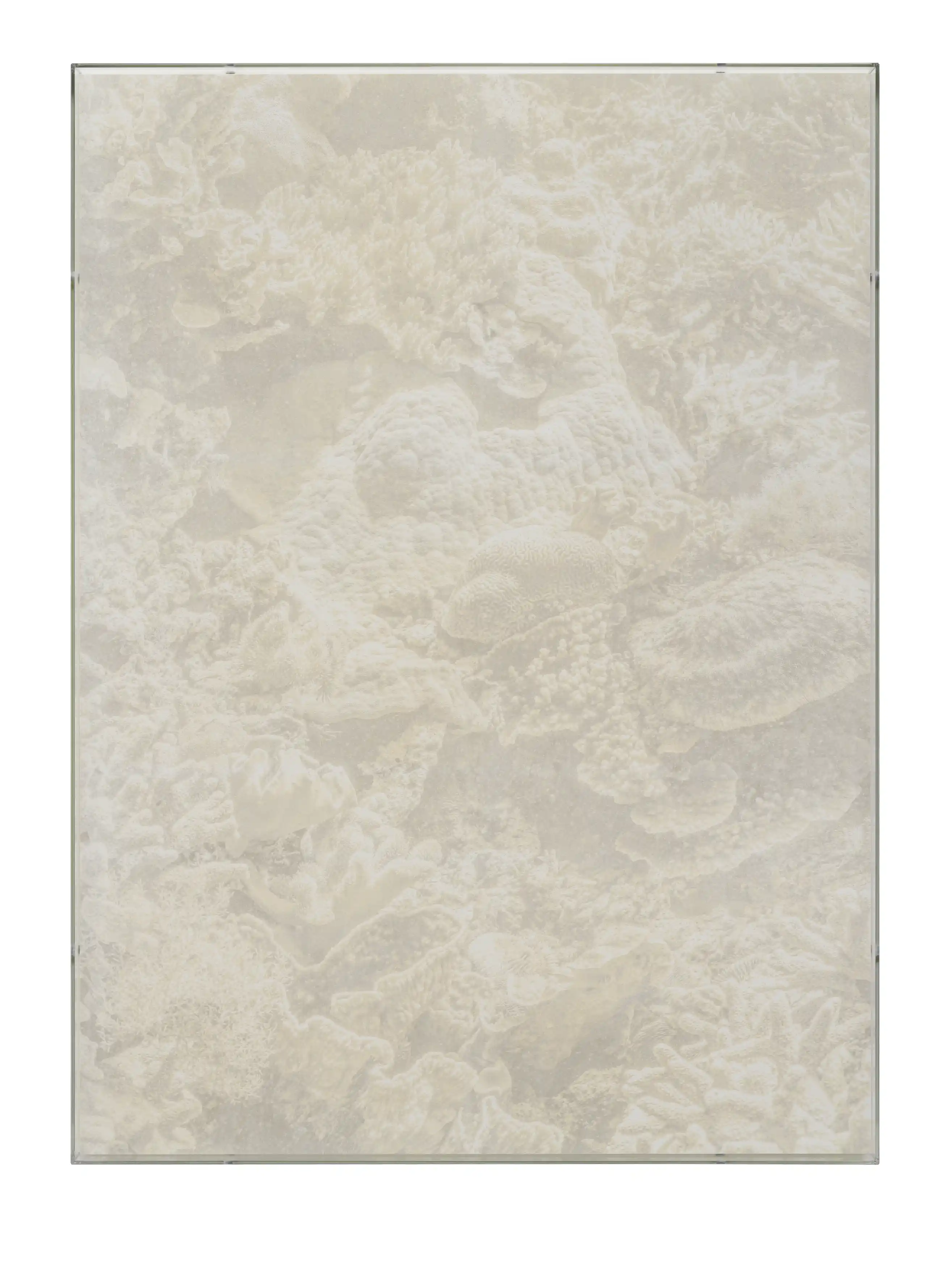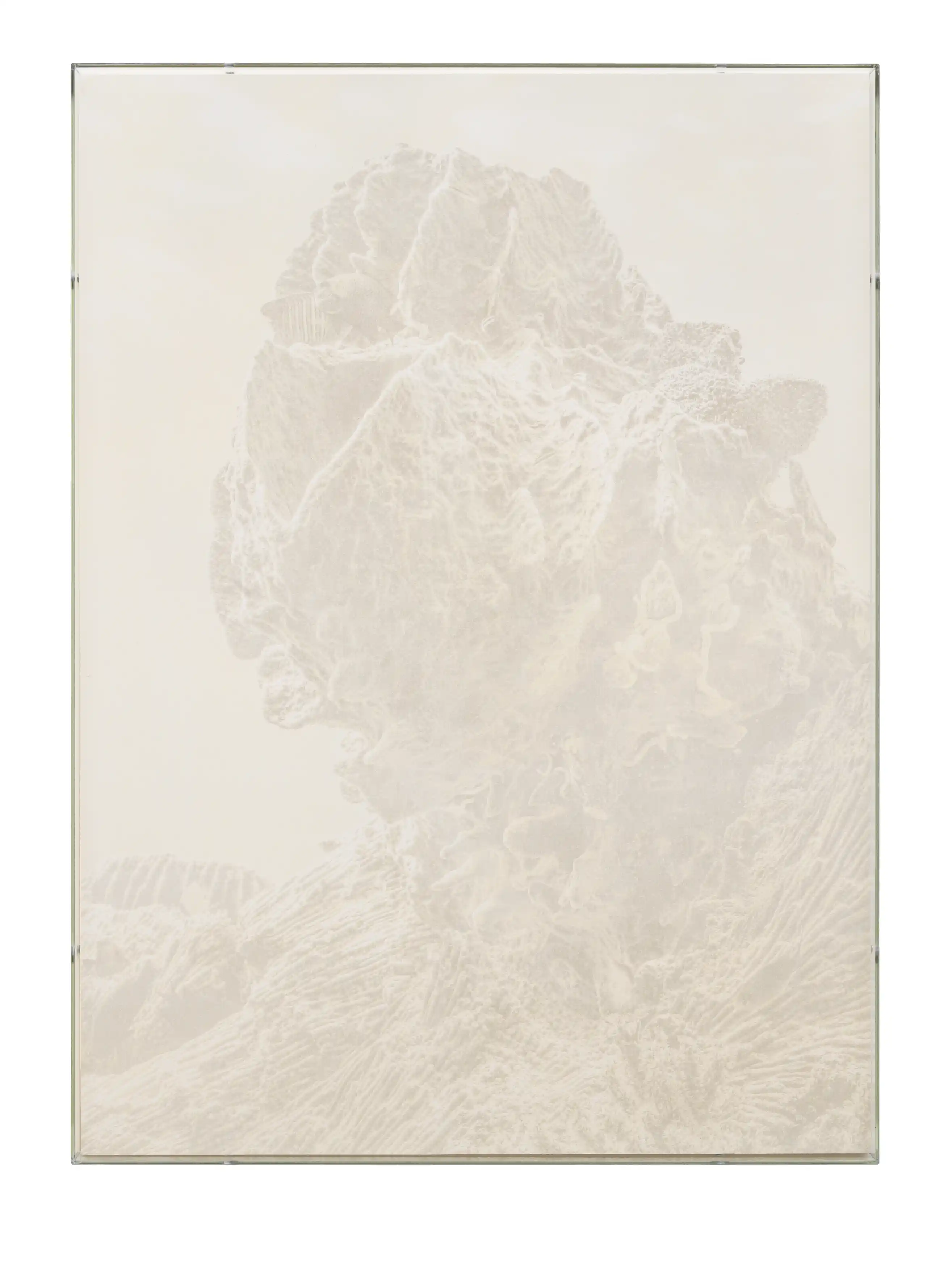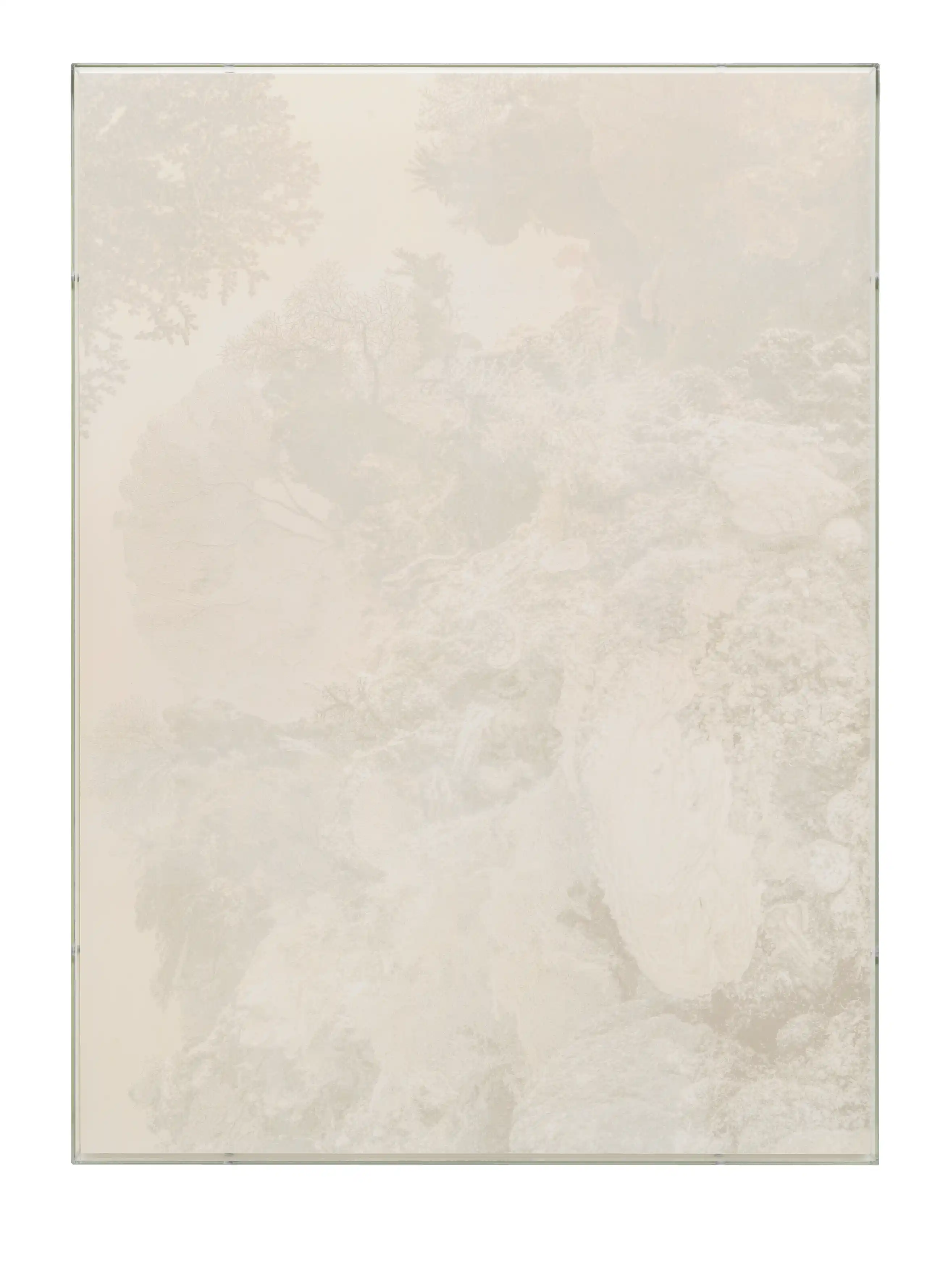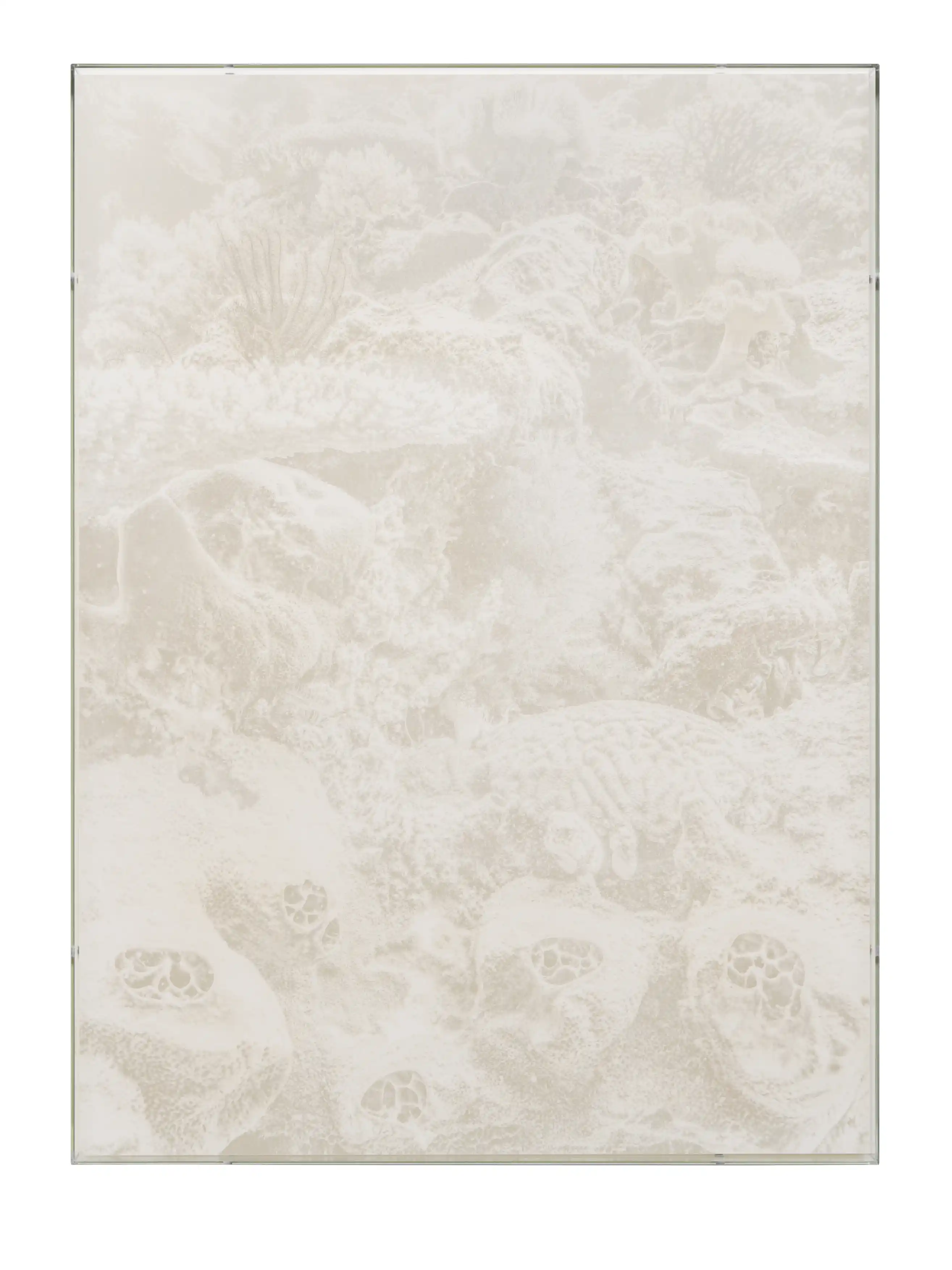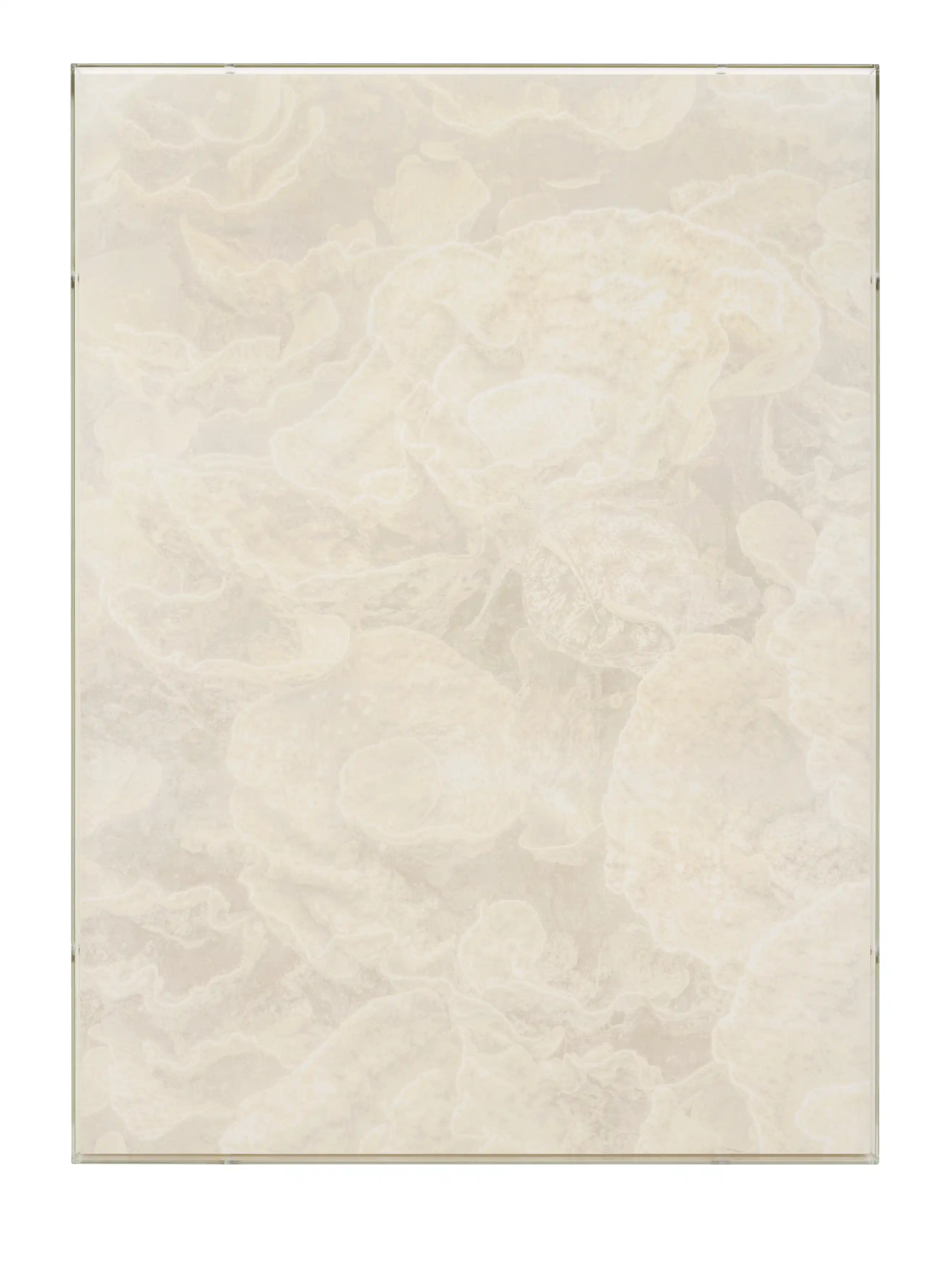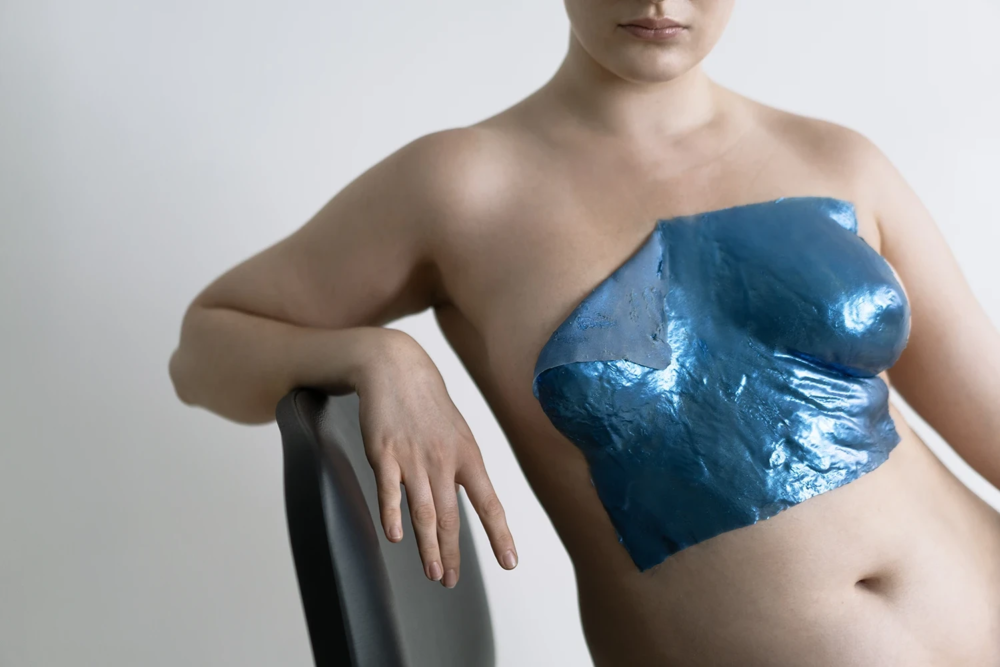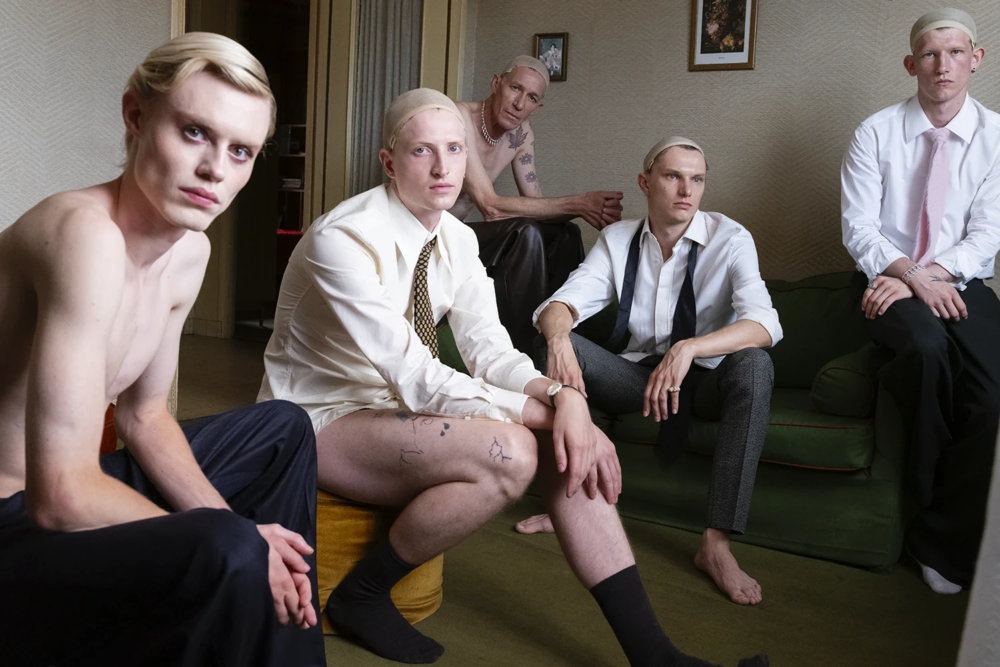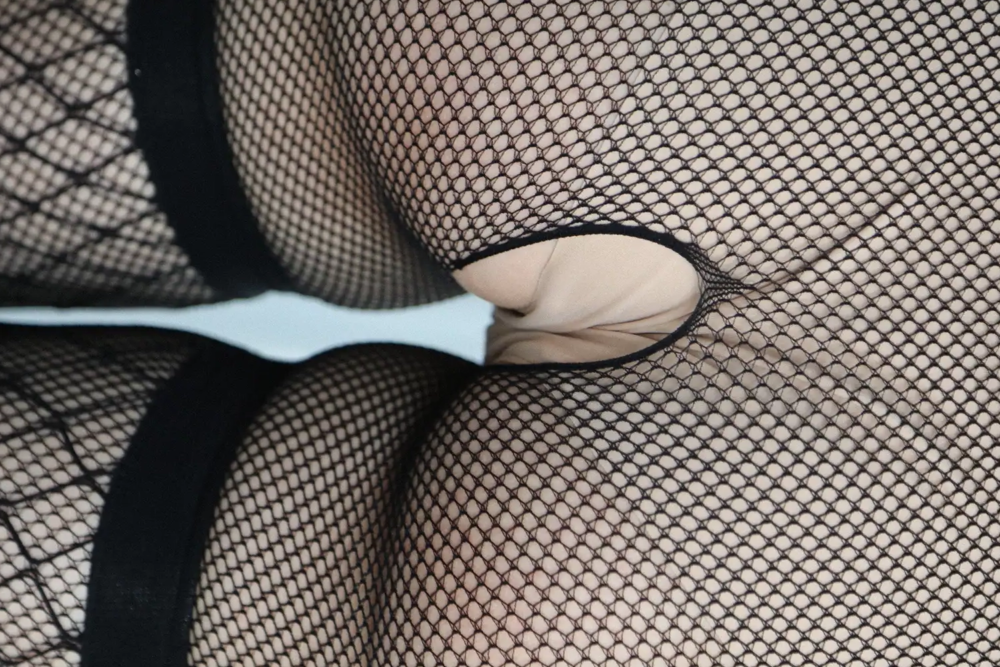
Rediscovering Marine Forests at Miart: Julian Charrière’s Art for Ruinart
Julian Charrière has conceived an ode to the Lutetian Sea, a vast body of water that covered the Champagne region 45 million years ago. At Miart, Ruinart continues its initiative, Conversations with Nature
Conversations with Nature – Julian Charrière’s Artistic Research for Ruinart
As proof of the existence of a sea that once covered two-thirds of the European continent, the chalky soil of the Reims hillside is characterized by fossil traces of marine forests. For Ruinart, Julian Charrière created an ode to this Lutetian Sea—an extensive stretch of water that blanketed the Champagne region 45 million years ago, the remains of which are found in the Maison’s underground chalk cellars, known as the Crayères.
What does “Lutetian” mean?
The term “Lutetian” refers to a stage of the Middle Eocene, when vast areas of central and western Europe were submerged by warm, shallow seas. Its name is linked to the ancient designation of Paris, Lutetia, as the Paris Basin contains Lutetian-age strata formed by fossil-bearing sediments that attest to the variety of marine life from that era. In this region, large limestone formations rich in fossils—including mollusks, corals, and other aquatic species—developed, and today serve as a primary source for studying the evolution of oceans and their ecosystems.
The evidence of this ancient sea is not confined to Reims or the Champagne region but appears in different parts of Europe, including certain areas of northern Italy. There, marine-origin limestones alternate with volcanic strata and lake deposits, highlighting how the Lutetian was a period of great geological and environmental transformations. The discovery of fossil remains—tropical fish, mollusks, and even turtles and crocodiles—reveals the rich and diverse ecosystem of the time, offering a glimpse into a past in which the landscape and marine species evolved in response to continuous climatic and geographic changes.
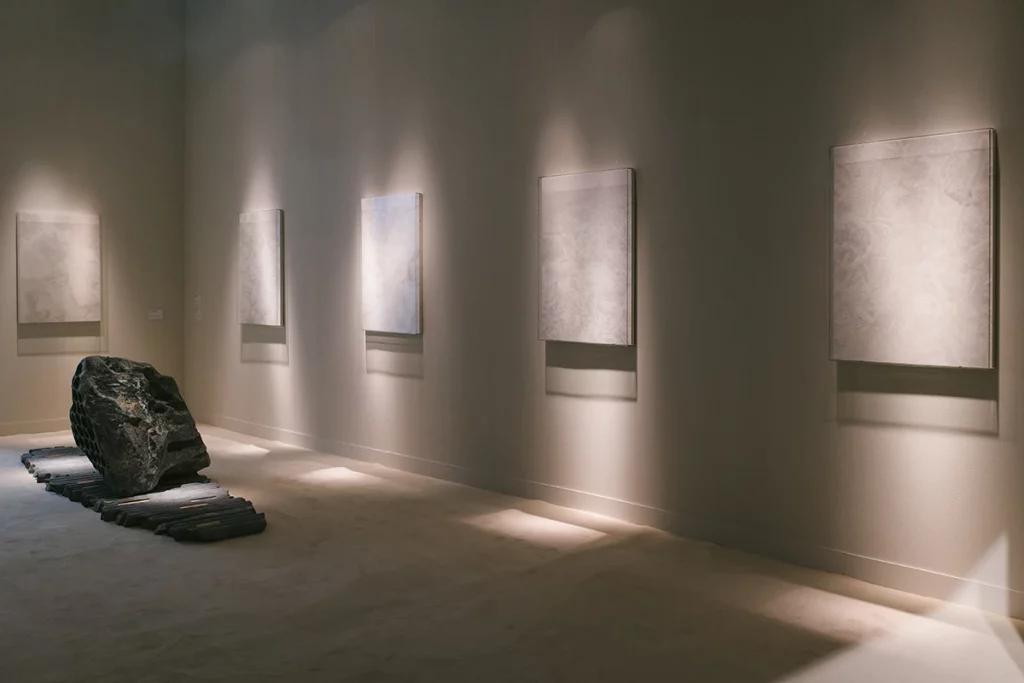
Conversations with Nature – Julian Charrière for Ruinart
The artist states, “Central to my work is the concept of encounter: an intimate dialogue with the place, the biome, and the environment. It is not merely about observation but about an exchange, in which the landscape and one’s presence intertwine, shaping each other in a silent mutual conversation.”
Launched in 2008, Maison Ruinart’s Conversations with Nature project grants carte blanche to contemporary artists, inviting them to create works aligned with the Maison’s values, including raising awareness of climate change and championing reforestation.
Julian Charrière’s Photolithographs: A Tribute to Past Ecosystems
With this work, the artist pays homage to the marine prehistory of our planet and reaffirms the importance of ocean conservation. The photolithographs presented by Charrière depict coral reefs—luminous, vibrant worlds that evoke the Lutetian Sea at its ancient peak. Today, that forest hidden beneath the waves is merely a memory, etched into the chalk layers beneath the Champagne region’s landscapes. These digital prints, divided into chromatic segments, reimagine color through the use of pigments derived from locally sourced limestone and crushed coral.
Using a 19th-century lithographic process, the piece reveals spectral images in which chalk, serving as both medium and artwork, brings about a circularity of material. In this delicate equilibrium, each layer of creation hints at stories from distant geological epochs. The aesthetics of the work evoke the fragility of these ecosystems and the enduring memory of the sea through the ages.
Remnants of the ancient marine world also reappear in the form of sculptures—keepsakes of ancient glaciers. In shaping them, Charrière incorporates metal inserts, a trace of humanity’s intervention in nature.
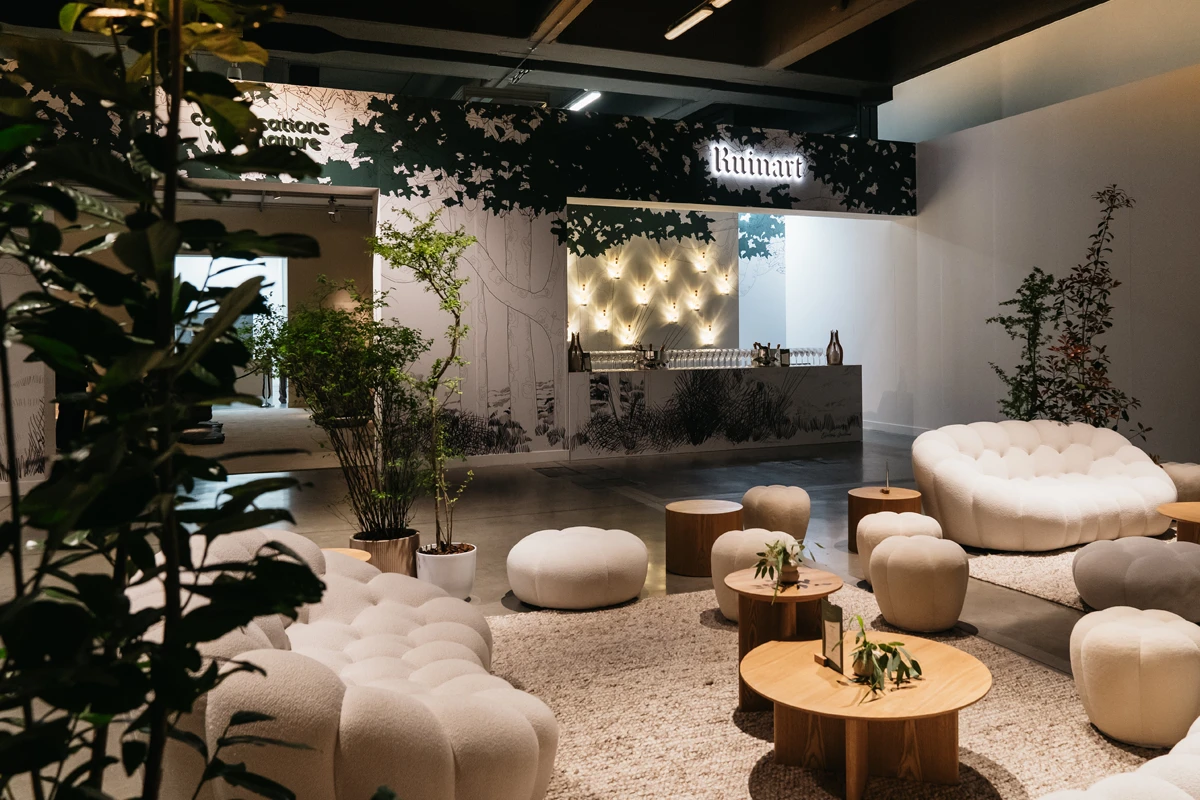
Artists and Champagne: From Salvador Dalí to Maison Ruinart’s Conversations with Nature
Beyond its role as the élixir par excellence, champagne becomes a stage for inspiration—a catalyst for creativity. Flickers of liquid light evoke dreamlike visions and echoes of a past awaiting rediscovery. The initiative Conversations with Nature by Maison Ruinart is part of this legacy of layered artistic projects. Since 2008, the program has offered carte blanche to contemporary artists commissioned to create works reflecting the Maison’s values, including climate change awareness and reforestation.
From the Belle Époque posters by Mucha and Toulouse-Lautrec to tributes by Salvador Dalí, champagne has risen to the status of a symbol of sophistication and creative experimentation. Dalí, for example, conducted studies for a surrealist champagne glass. For him, the effervescence of the bubbles was a dreamlike image he revisited in the Champagne Standard Lamps (1939, now at the Victoria and Albert Museum): floor lamps made of stacked champagne glasses, designed for the poet and patron Edward James—the same man portrayed from behind by René Magritte in Not to be Reproduced (1937).
In the book Les Vins de Gala (Taschen), Dalí explores the world of wine, including champagne. This work of art in book form sees the artist classifying wines based on the sensations they evoke in him, creating categories like “wines of sensuality,” “impossible wines,” or “luminous wines,” interspersed with epigrams such as: “true connoisseurs do not drink wine, they taste secrets.”
Maison Ruinart’s Sustainable Commitment to a Dialogue Between Art and Nature
Ruinart engages in a unique dialogue with art, both in and beyond its vineyards. The oldest champagne house addresses contemporary global challenges through the prism of creativity. From its historic collaborations, such as the poster commissioned from Alphonse Mucha in 1896, to recent projects that combine artistic creation with environmental concerns, Ruinart has partnered with artists like Tomás Saraceno, NILS-UDO, and Eva Jospin to explore and illuminate the connection between humans and nature.
According to Frédéric Dufour, President of Maison Ruinart, “these conversations with nature reflect our long-standing commitment to restoring harmony with the natural world and raising public awareness on this topic through art.”
The number 4 on Rue des Crayères, Maison Ruinart’s address in Reims, represents the pinnacle of this commitment to nature and art as a unique cultural destination. Starting in 2024, visitors can discover the Maison’s savoir-faire at its historic headquarters—recently renovated—and admire over 20 artistic installations in the surrounding landscaped park. This experience, merging tradition, innovation, and environmental responsibility, encapsulates the spirit of Ruinart, reflecting its mission to preserve and enhance cultural and artistic heritage.
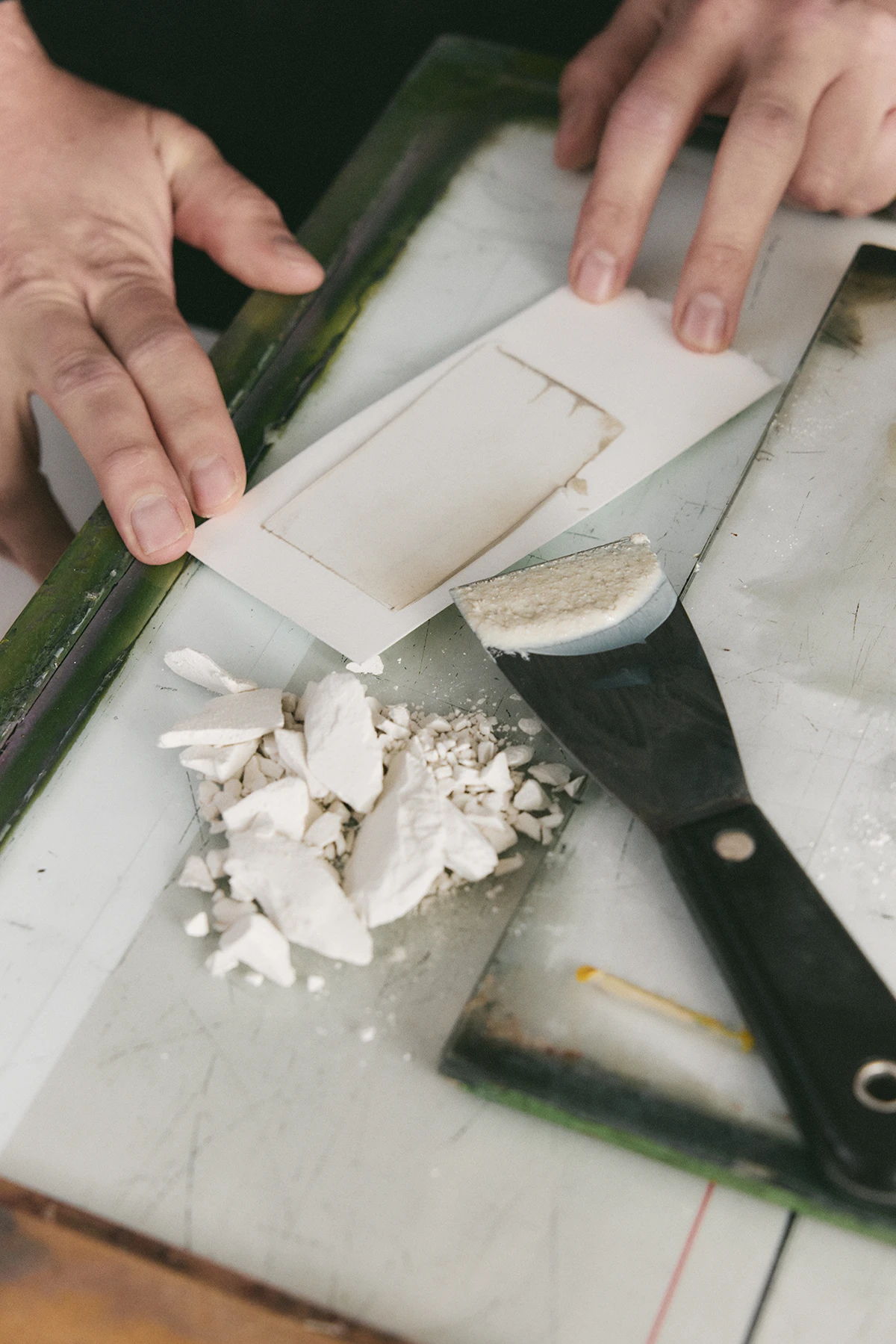
Reforestation and Climate Change – Maison Ruinart’s Ethical Entrepreneurship in the Montbré Forest
Faced with climate challenges, Maison Ruinart is actively reassessing its methods and environmental impact. With milder winters, scorching summers, and faster grape ripening, the Maison has embarked on an innovative path to safeguard its 300-year-old heritage. This new approach is reflected in the cuvée Ruinart Blanc Singulier, showcasing updated expertise tailored to changing climate conditions. By combining sustainable viticulture with creative enology, the Maison offers a fresh take on its Blanc de Blancs, upholding the values that have always defined its identity. Crafted from Chardonnay grapes, this wine reveals singular aromas while maintaining the aromatic freshness characteristic of Ruinart.
Furthermore, in the historic lands of Taissy in the Champagne region, the Maison has initiated efforts to protect the soil and promote biodiversity, including planting tens of thousands of trees and shrubs and reforesting the nearby Montbré forest. This project is part of a broader vision of fostering a more sustainable future, consistent with Ruinart’s pioneering “second skin” paper packaging, launched in 2020 to reduce the carbon footprint of its bottles.
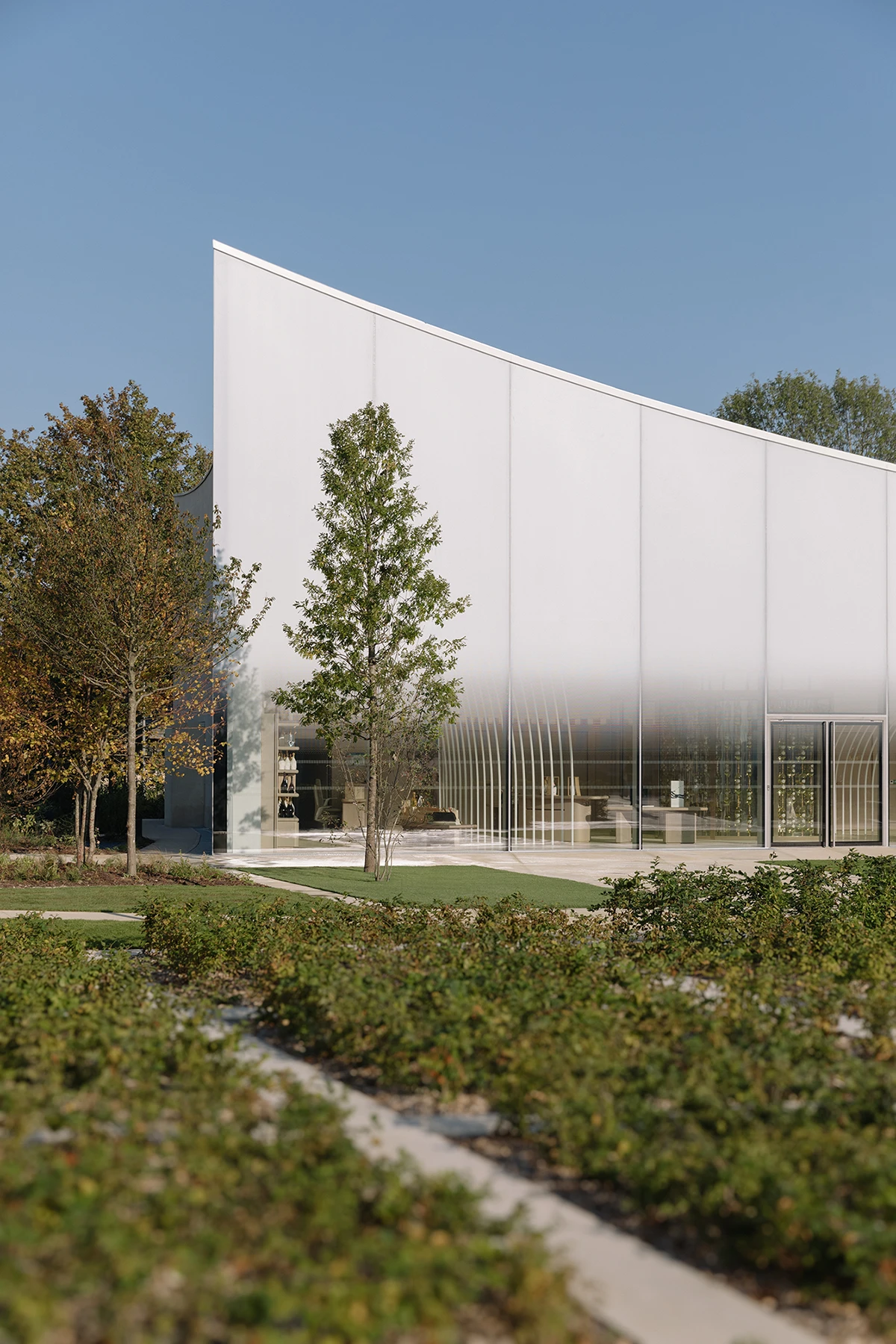
Julian Charrière – Biographical Profile
Julian Charrière is a French-Swiss artist who moved to Berlin. His works—fusing performance, video, sculpture, and photography—have been exhibited in cultural institutions and biennials worldwide. Many of his projects include an exploratory fieldwork phase in remote and sometimes abandoned locations, such as volcanoes, glaciers, and radioactive sites.
Charrière questions our cultural perception of the natural world and its evolution, from the Romantic movement to the Anthropocene. Through his artistic research, in which he frequently collaborates with scientists, engineers, art historians, and philosophers, he invites us to reconsider how we inhabit the world and the imaginative representations we have created of it.
As a guest artist in the Conversations with Nature series in 2025, Julian Charrière has produced numerous works reflecting Maison Ruinart’s commitment to benefiting nature. This series will be shown throughout 2025 at the art fairs where Maison Ruinart is a partner: Art Basel Hong Kong, Miart, Berlin Gallery Weekend, Art Basel Basel, Frieze Seoul, and Art Basel Paris.
He is represented by Dittrich & Schlechtriem, Perrotin, Sean Kelly, Sies + Höke, OMR, and Galerie Tschudi.
Federico Jonathan Cusin
